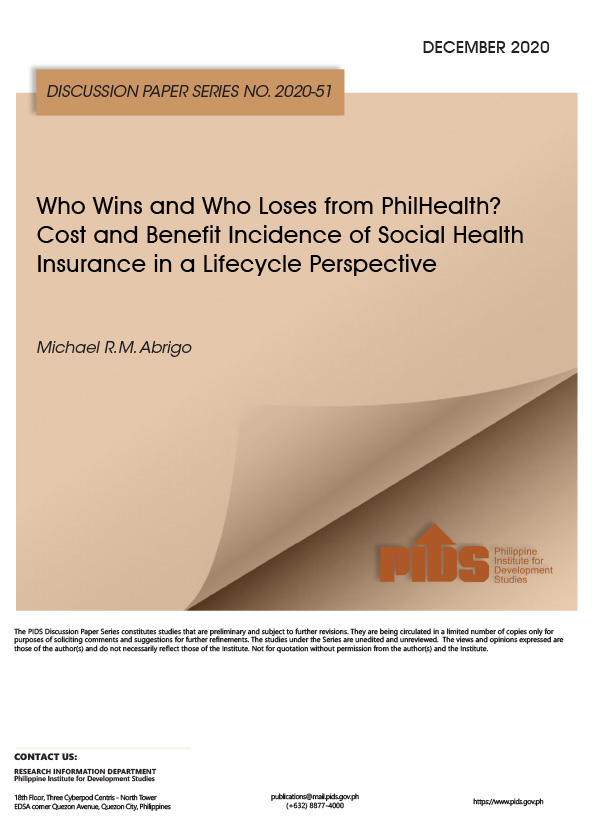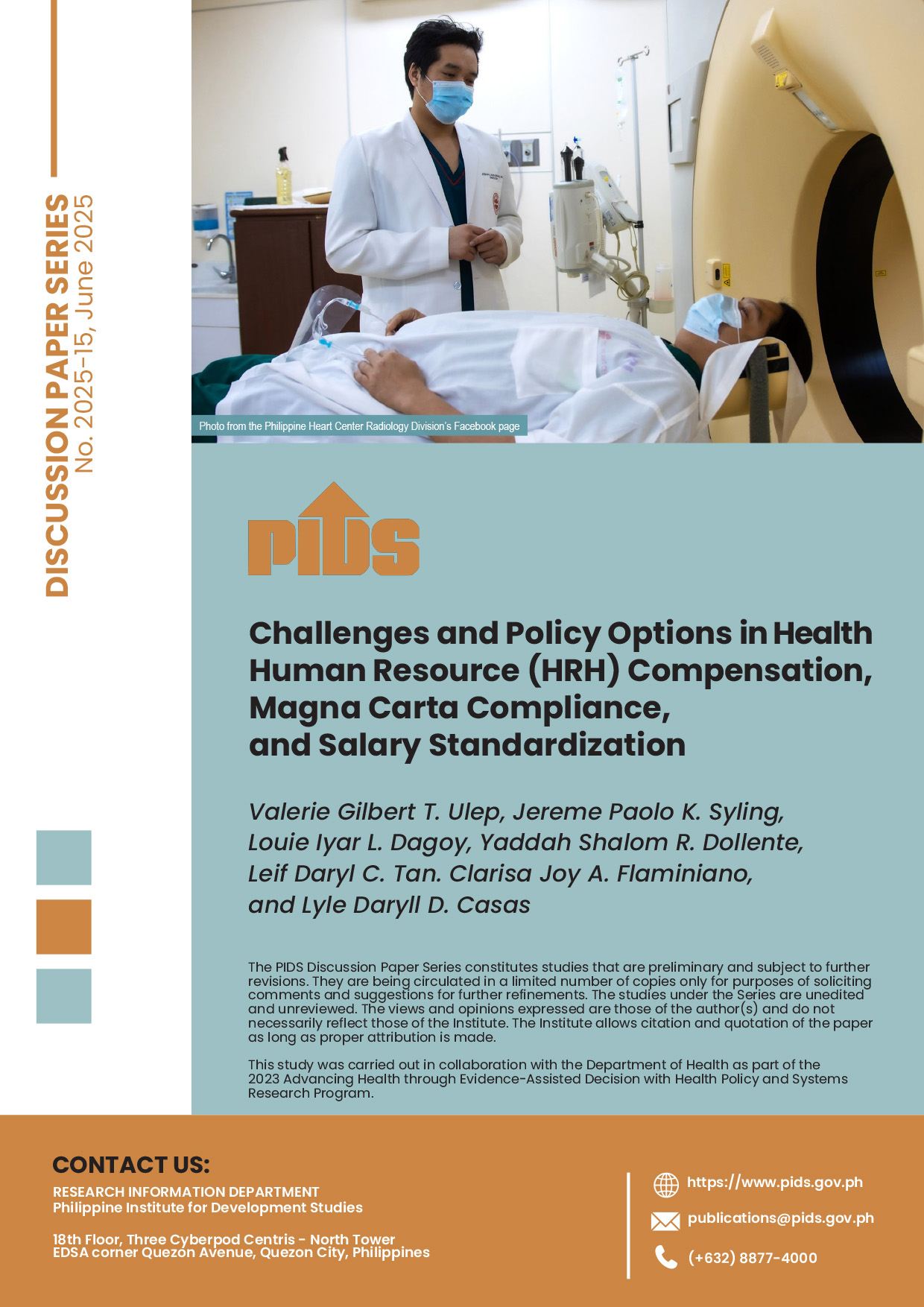The study uses incidence analysis to examine the financial costs and benefits from the Philippine’s National Health Insurance Program (NHIP) through the Philippine Health Insurance Corporation (PhilHealth) that accrue to different age groups and socio-economic classes. It finds that premium contributions to and benefits payment by PhilHealth are both pro-poor. As a public transfers program, PhilHealth reallocates resources from higher to lower income population. As a pseudo-pension program, it transfers resources from workers to finance health care of retirees. As a health insurance, its premium contributions are not actuarially fair given the benefits it provides. Over the course of an average Filipino’s lifetime, the NHIP is estimated to lose about 40 centavos for every peso an individual contributes directly or indirectly as premium to PhilHealth.
Comments to this paper are welcome within 60 days from date of posting.
Email publications@mail.pids.gov.ph.
Citations
This publication has been cited 1 time
- Cai Ordinario . 2021. PIDS study urges PhilHealth to ‘manage’ financial deficits. Business Mirror.













